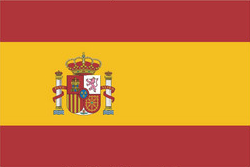 GMV, leader in technological solutions for public-transport management, has recently won the contract for the advanced fleet-management and passenger-information system for the BRT system of the Mexican city of Guadalajara Jalisco.
GMV, leader in technological solutions for public-transport management, has recently won the contract for the advanced fleet-management and passenger-information system for the BRT system of the Mexican city of Guadalajara Jalisco.
GMV has designed the turnkey project for the public bus transport system of Guadalajara in collaboration with the Mexican company Servyre, an ITS specialist.
Cities all around the world are now looking for new, more sustainable and efficient public-transport arrangements to fit in with the new economic and cultural context. This is where Bus Rapid Transit (BRT) systems come into their own. The use of dedicated public-transport lanes in cities helps to streamline public-transport flows with a minimum outlay. This new transport model is now being taken up massively in many different regions of the world and nowhere more enthusiastically than in the BRT system of Guadalajara, a trailblazer in Latin America.
In the Guadalajara fleet-management system GMV has implemented the state-of-the-art fleet-management control center. Working from this platform, SITEUR, the Public Transport Manager of Guadalajara, will be able to supervise and control all the operations of the operating company’s fleet in real time (both on the trunk line and feeder lines) gathering historical information on the system and generating reports to help in decision-taking for improving the passenger service. The project also includes the supply of onboard fleet-management GPS/GPRS equipment for the 144-bus fleet plus a TFT monitor as user-driver interface with capacity for information exchange with the control center. The proposed fleet management software is integrated with SITEUR’s resource optimization application GOAL.
This project also includes definition of future system expansion with new functions like onboard acoustic messages, bus-stop panels, etc.
GMV’s system improves public-transport management in the city of Guadalajara, one of Latin America’s biggest cities with over 8 million inhabitants, providing the required technological infrastructure for monitoring, regulation and control of the fleet and working up the running data afterwards.
The city of Guadalajara, capital of the state of Jalisco, spreads over a total area of 200 Km2 and has a population of over 6 million (in its whole metropolitan area), making it Mexico’s second most populous city and one of the biggest in Latin America.







